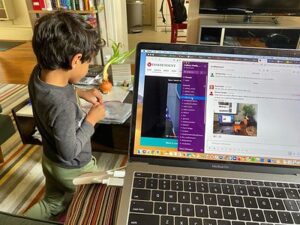A few days ago, I wrote about the impact of losing The Children’s Center on campus in 2021. During the pandemic, WCC administrators decided it was in their best interest to close the licensed, on-campus childcare center to repurpose the building.
The reasons they gave were all nonsense, as was the substitute care plan they proposed for students who lack affordable childcare. In their eyes, it was acceptable to provide vouchers to student-parents to pay for childcare off-campus. There was no acknowledgment on their part that few off-campus providers offer childcare in the evenings, or drop-in care.
As I mentioned in my recent piece, it’s really hard to track the number of students who didn’t enroll because they couldn’t find reliable, affordable care for their children while they attended classes. It’s easier to track the student-parents who withdraw from school because they can’t find or afford care through off-campus providers. The numbers are likely to be slim, not because only a few student-parents drop out, but rather because few student-parents attempt to enroll in classes in the first place.
And while I am sure that a WCC student could get vouchers for childcare, all the vouchers in the world won’t do a thing when care just isn’t readily available. In 2022, in response to massive declines in the number of licensed daycare providers, the State of Michigan laid out $100M to open up 1,000 new daycare centers by 2024. That’s $100,000 per center on average. The good news is that the plan has worked.
In FY 2023, Michigan had nearly 8,100 licensed childcare providers. That’s more than 1,000 more than the state had in 2021 and a full year ahead of the plan. Cool, right?
Childcare costs still aren’t sustainable for student parents
Well, the devil is in the details. Many of Michigan’s existing daycare centers were unable to access some of the grant money the state had budgeted for rehabilitating and expanding existing daycare facilities. Another chronic problem is staffing, which is closely related to the low pay that most childcare providers earn.
While achieving the goal of 1,000 new providers is laudable, there’s no real plan in place to keep those providers open – or the 7,000 other providers who remained open following the pandemic. Federal childcare subsidies ran out long ago, which transferred the cost of subsidized childcare to parents, other agencies, and in some cases, to the childcare providers themselves.
According to state records, childcare center closures have not accelerated since the federal subsidies dried up, but the question remains of how long care centers can stay open without a serious re-think of Michigan’s approach to childcare costs.
The new budget, set to take effect next week, does include subsidies for childcare, and opportunities for ISDs to partner with community based organizations to provide childcare to low-and middle-income households. But the plan stops short of creating a stable, sustainable system that encourages providers to stay in business over the long-term.
However, the likelihood that the lack of affordable, on-campus childcare will prevent student parents from enrolling in classes at WCC remains uncomfortably high. It’s just another a thoughtful touch from an administration made up mostly of women.
Photo Credit: US Department of Agriculture, via Flickr













